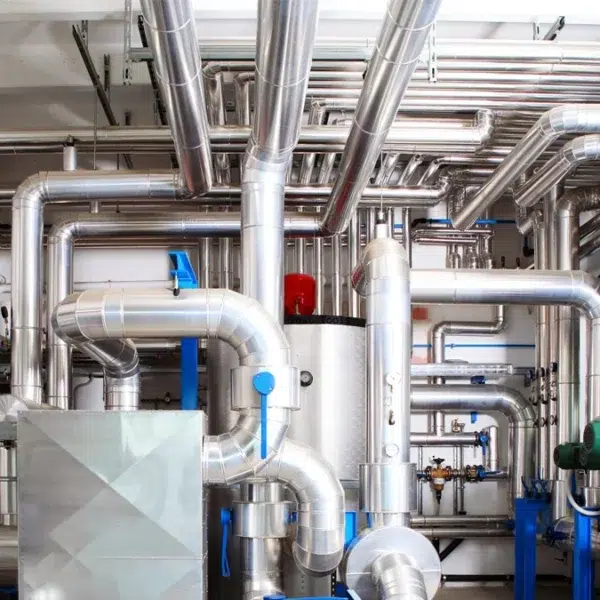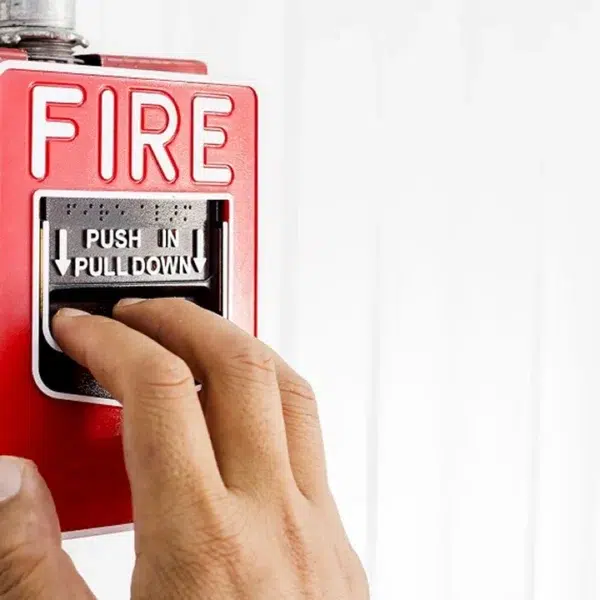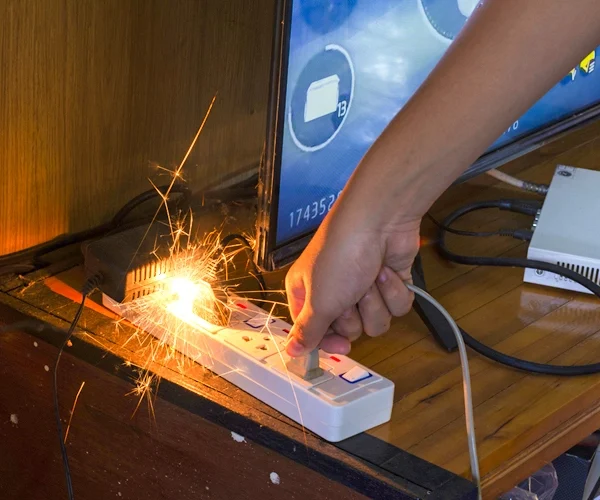7 Most Important Fire Safety Measures in Buildings for Fire Prevention


7 Most Important Fire Safety Measures in Buildings for Fire Prevention
One of the most important fire safety techniques for controlling and preventing fires is to establish open spaces. The National Fire Protection Association (NFPA) states that to allow residents to easily use emergency evacuation routes and for the fire department to get in, all doors, windows, and points of access into and out of your facilities must be kept easy to understand.
Make sure that all exterior doors, including fire, overhead, and other doors, as well as windows, stairways, hallways, and external areas like fire hydrant routes, are easily accessible from your building. These zones cannot be restricted by garbage cans, cars, shopping carts, deliveries, or landscaping. You have covered one of the most important parts of building fire safety each day by doing this.
Today’s post will discuss a few of the most important fire safety measures in buildings fore fire prevention that you can implement right away.
1. Preventative Maintenance & Inspections
Your top priority is to protect the lives of the people in your buildings. Since it’s impossible to predict when a fire might occur, proactive fire prevention system checks are your best defense against a malfunctioning system that may fail when needed. There are also steep penalties for not following NFPA 72 inspection criteria and those of your insurance carrier.
Inspections are necessary regularly for:
- Fire sprinkler systems
- Backflow preventer assemblies
- Fire suppression systems
- Kitchen hood suppression systems
- Fire alarms
- Fire extinguishers
- Alarms, monitors, detectors
These inspections will identify any issues that need to be addressed so maintenance can be carried out. Keeping your fire protection systems operational is critical to preventing building fires and stopping fires before they spread.
2. Building Access & Emergency Evacuation Routes
One of the most important fire safety techniques for controlling and avoiding fires in buildings involves maintaining open spaces. The National Fire Protection Association (NFPA) and Occupational Safety and Health Administration (OSHA) require that doors, windows, and all access points into and out of your buildings remain clear. This ensures occupants can use emergency evacuation routes to get out easily, and the fire department can get in.
Make sure your facilities have unobstructed fire doors, overhead doors, other exterior doors, hallways, pathways, stairways, windows, and outdoor areas such as fire hydrant paths. These zones cannot be blocked by shopping carts, deliveries, vehicles, trash receptacles, or landscaping. You can take care of one of the most important aspects of building fire safety by engaging in this every day.
3. Fire Exit Signs and Fire Alarms
As important as unblocked exits are to fire safety, people finding the exits is equally important. NFPA needs exit signage and lighting to be always enlightened and easily noticed, even in a power outage. Exit signs must be bright, free from obstruction, and emergency lighting units functional, with backup batteries fully charged and reliable.
Fire alarm systems are crucial for exiting the building during emergencies. These systems include fire alarms, all components that make them work, those that feed into the alarms, and those connected to them (fire sprinklers, smoke detectors, heat detectors, evacuation systems, etc.). They detect and alert people to many different hazards besides fire, such as carbon monoxide poisoning, leaky pipes, severe weather, and active shooters. Therefore, they must function 100% of the time.
4. Develop Good Daily Habits
Developing good daily habits is crucial for fire safety in the workplace. Whether you manage grocery stores, distribution centers, retail shops, or restaurants, fire safety prevention relies on dedication, training, and excellent practices.
Here are 10 daily fire prevention and safety tips to reduce fire hazards:
- Trash is properly disposed of in trash/recycling containers and not stacked up, especially in doorways.
- Industrial-grade, grounded extension cords are the only kinds that should be utilized for a long duration of time.
- Built-in circuit breakers and UL certification are qualities found in all power strips.
- Cigarette butts and containers should be kept away from the building, shrubs, and flammable items.
- Combustible materials/liquids are safely stored in an approved cabinet per NFPA standards.
- Electrical appliances are GFCI protected; nothing hot is left on unless someone is present.
- Nothing hangs from fire sprinkler tubes or spray heads.
- Fire pump rooms/riser rooms are free of everything except fire prevention equipment.
- All supplies/stock/merchandise are at least 3 feet away from heating units and ducts.
- All fire extinguishers are properly charged, undamaged, and easily accessible; none are missing.
5. Train Employees on Fire Prevention and Safety Measures
Human error is a common cause of fire. This can result from carelessness, unintentional mistakes, improper equipment use, or lack of fire safety training. To protect your retail stores, grocery stores, big box stores, warehouses, restaurants, or distribution centers and their occupants from fire, educate employees on the causes of fire, train them to use fire extinguishers, encourage vigilance and a daily fire-safety routine, and hold annual, mandated NFPA fire-safety training sessions.
Ensure your employees are properly trained in fire prevention and safety procedures. Encourage them to report any possible fire concerns immediately. Only through fire safety prevention and life-safety training can your personnel prevent fires, put out fires, and safely escape in case of a fire. Customers and employees are best protected from fire hazards when NFPA fire-safety standards are followed. It also ensures that your personnel are aware of the overall fire prevention regulations for buildings.
6. Take Special Fire Precautions in the Kitchen
Did you know that cooking is one of the top causes of fire-related injuries and damages? Most house fires start in the kitchen. But you can still cook safely by following these tips:
- Never leave the kitchen unattended while cooking.
- Stay focused on your cooking.
- Keep flammable items away from stovetops and burners.
- Keep cooking surfaces clean and grease-free.
- Use kitchen appliances responsibly and unplug them when not in use.
- Ensure your kitchen equipment meets fire safety standards.
- Have a fire extinguisher in your kitchen for emergencies.
7. Know How to Use a Fire Extinguisher
Fire extinguishers are vital tools against fires, but many people don’t know how to use them. Before using one, know the different types for various fires:
- Class A: for solid combustibles like paper and wood
- Class B: for fuel and gas-based fires
- Class C: for electrical fires
- Class D: for fires fueled by flammable metals
- Class K: for oil and grease fires
Using a fire extinguisher is simple with the PASS method:
- Pull the safety pin from the handle.
- Direct the nozzle towards the base of the fire.
- Gradually squeeze the trigger to release the extinguishing agent.
- Move the nozzle from side to side at the base of the flames.
- Remember to visually inspect extinguishers monthly, have them professionally inspected annually, and refill them every six years.
Conclusion
Ensuring fire safety in buildings requires a comprehensive approach that covers various aspects of prevention, preparedness, and response. From maintaining open spaces for easy evacuation to conducting regular preventative maintenance and inspections of fire protection systems, every measure plays a crucial role in minimizing fire risks.
Additionally, it’s essential to prioritize training employees on fire prevention measures and equipping them with the knowledge to respond effectively during emergencies. Special precautions in high-risk areas like kitchens further enhance safety measures, along with knowing how to correctly use fire extinguishers for prompt intervention.
By implementing these fire safety measures diligently and fostering a culture of awareness and preparedness, we can significantly reduce the likelihood of fire incidents and mitigate their impact on occupants and property. Remember, proactive measures today can save lives and property tomorrow.
FaQ’s
1. What is the fire prevention system in the building?
The basic Components of a Fire Alarm System are the circuits that attach initiating gadgets like smoke detectors, heat detectors, manual pull stations, and water flow alarms. Also, many systems monitor gadgets essential to the fire safety of the building and also connect to initiating circuits.
2. What are the measures of fire safety in buildings?
Never restrict or lock fire exits. Move trash out of the route of exit. In addition to providing a path out in the case of a fire, fire doors also help prevent the spread of smoke and flames. Fire doors should never be pulled open.
Install smoke detectors in sleeping spaces and within bedrooms on every floor of your house. Every month, check the smoke alarms. Change the batteries if they’re not working. Consider a fire escape plan with everyone in the family and put it into practice twice a year.
https://youtube.com/watch?v=cveuVXqrYq4https%3A



